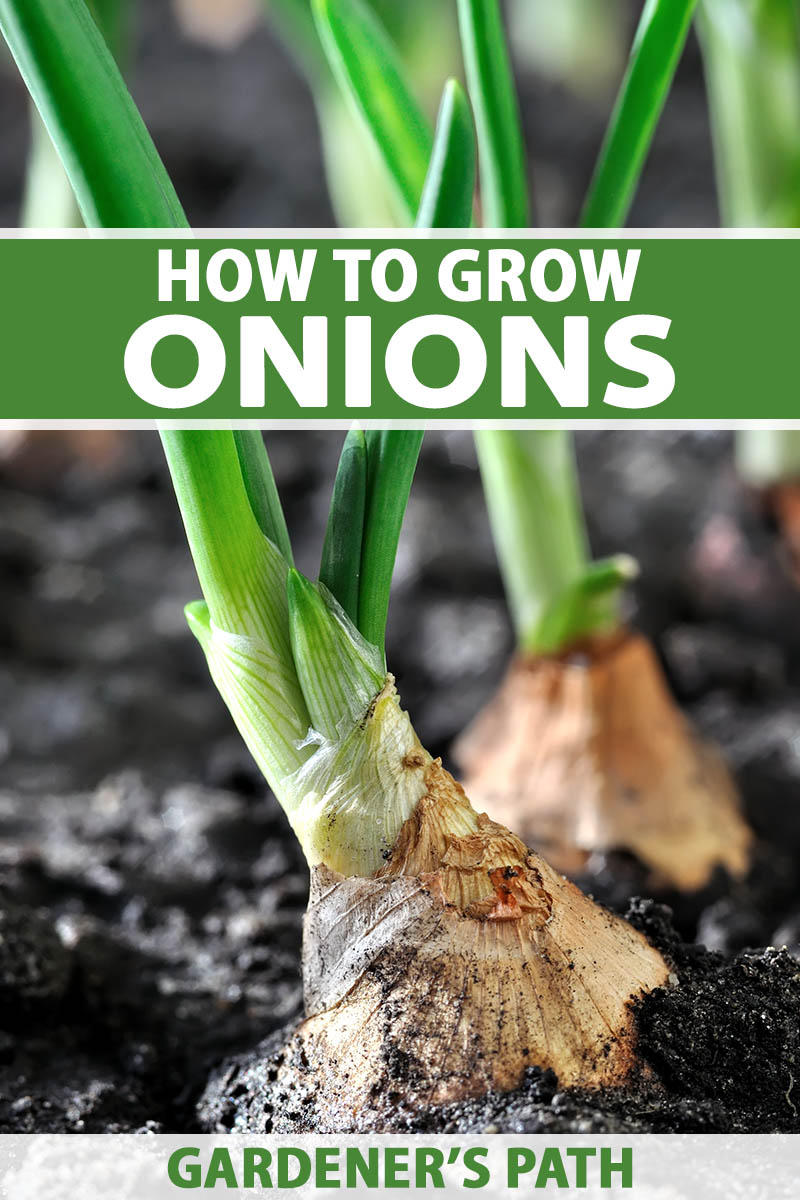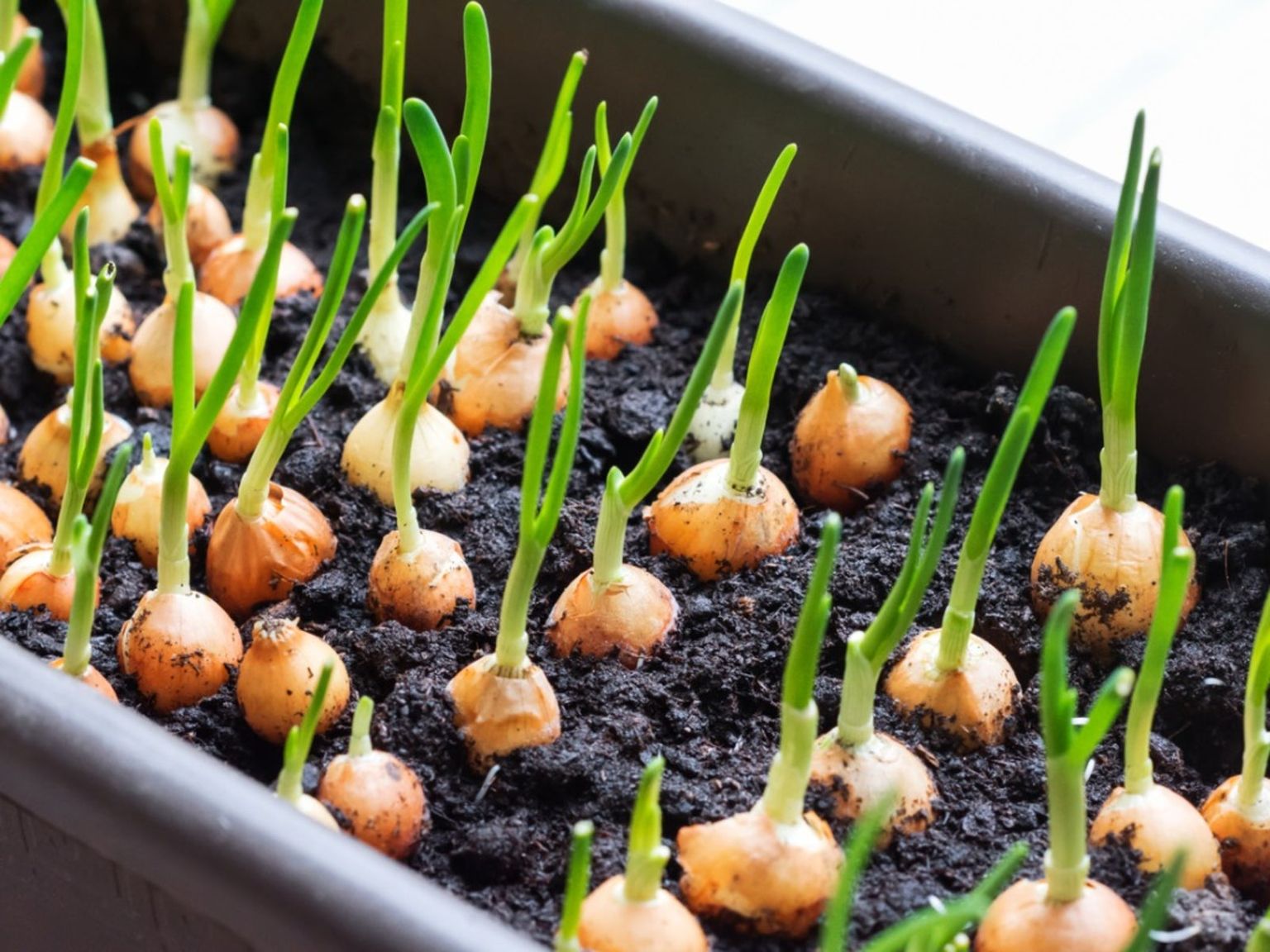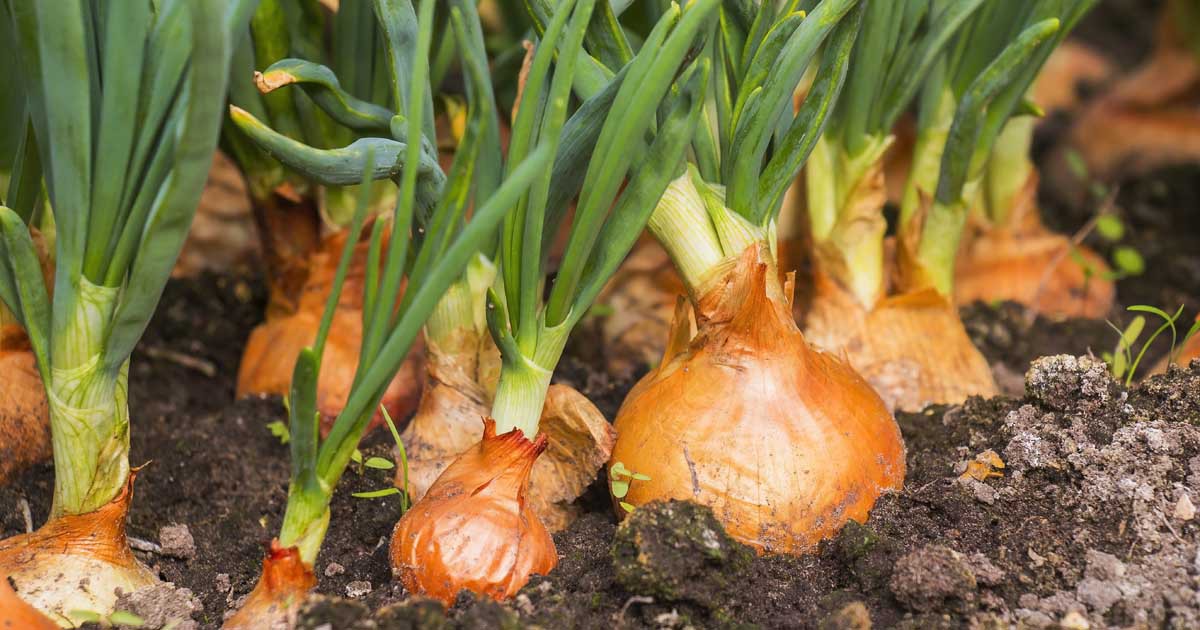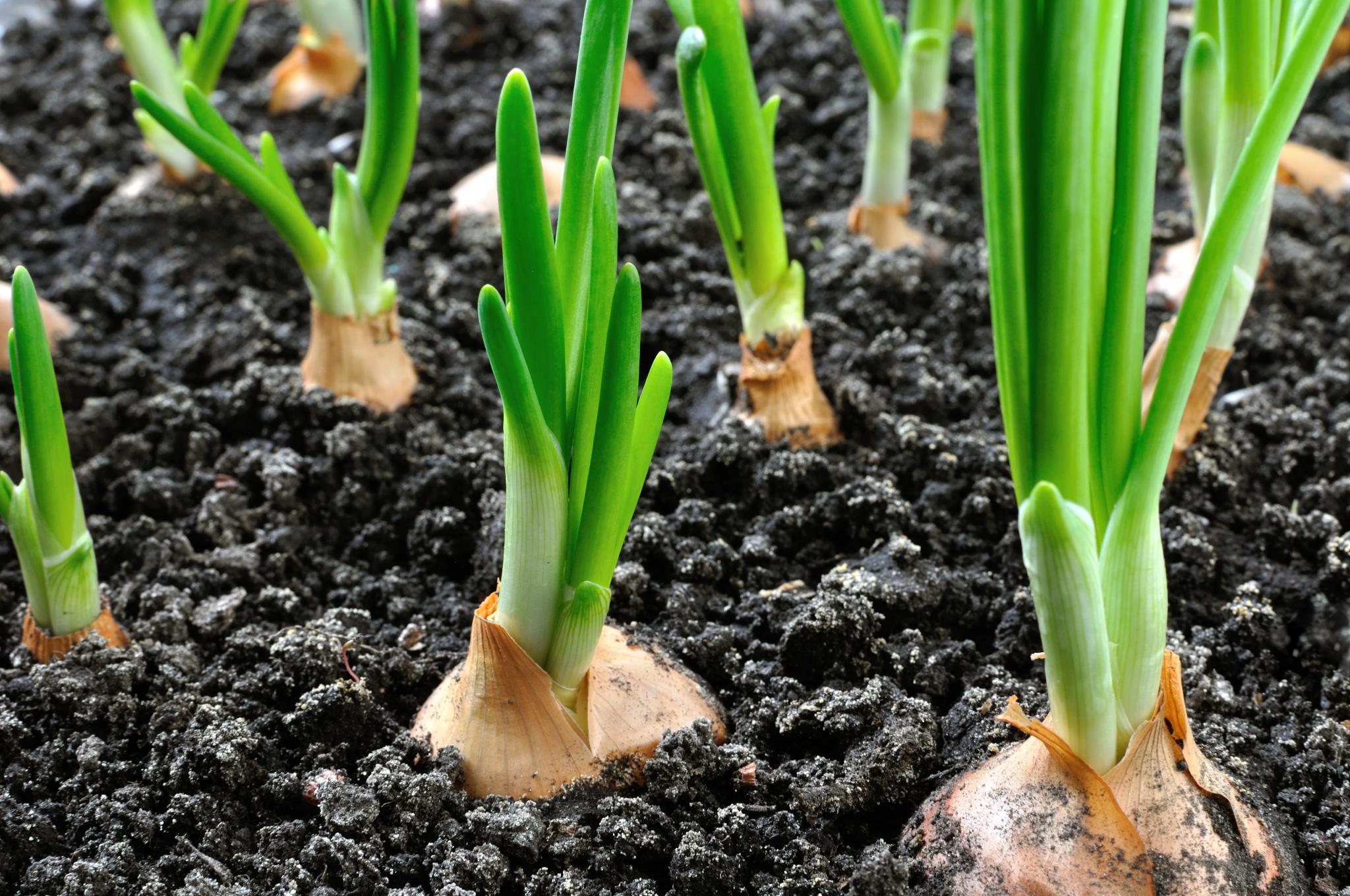How to Recognize Onion Seedlings: Early Signs of Growth
Onion seedlings are a crucial stage in the life cycle of onions, and recognizing them is essential for providing the best possible care. When onions are grown from seed, the first sign of growth is the emergence of a small, green shoot. This shoot, also known as a seedling, typically appears within 7-14 days of sowing the seeds. As the seedling grows, it develops its first set of leaves, which are usually a bright green color and have a distinctive, grass-like appearance.
One of the key characteristics of onion seedlings is their slender, upright growth habit. They tend to grow straight up, with the leaves emerging from a central point. This is in contrast to other plants, which may have a more sprawling or branching growth habit. By recognizing these characteristics, gardeners can identify onion seedlings and distinguish them from other plants that may be growing in the same area.
Another important aspect of onion seedlings is their sensitivity to environmental conditions. They require adequate moisture, warmth, and light to grow, and are susceptible to stress if these conditions are not met. For example, if the soil is too dry, the seedlings may become stunted or discolored. Similarly, if the temperature is too low, the seedlings may be slow to emerge or may not grow at all.
When it comes to what onions look like when growing, the seedling stage is a critical period. During this time, the onions are developing their root system and preparing for the next stage of growth. By recognizing the characteristics of onion seedlings and providing the right conditions, gardeners can help their onions grow and thrive.
As the seedlings continue to grow, they will begin to develop their second set of leaves, which are usually larger and more robust than the first set. This is a sign that the onions are healthy and growing well, and that they are ready to be transplanted into larger containers or directly into the garden.
Understanding Onion Bulb Formation: What to Expect
Onion bulb formation is a critical stage in the life cycle of onions, and understanding the process can help gardeners optimize their growing conditions. Bulb formation typically begins when the onion plant has reached a certain level of maturity, usually around 60-90 days after sowing the seeds.
During this stage, the onion plant begins to divert its energy from leaf growth to bulb formation. The leaves will start to yellow and fall over, and the neck of the plant will begin to swell. This is a sign that the bulb is forming, and the onion is preparing for harvest.
Daylight hours, temperature, and watering all play a crucial role in onion bulb formation. Onions require a certain number of daylight hours to form a bulb, typically around 12-14 hours per day. If the daylight hours are too short, the onion may not form a bulb at all.
Temperature also affects bulb formation, with ideal temperatures ranging from 60-70°F (15-21°C). If the temperature is too high or too low, the onion may not form a bulb properly.
Watering is also critical during this stage, as the onion needs consistent moisture to form a bulb. However, overwatering can be detrimental, as it can cause the bulb to rot.
When it comes to what onions look like when growing, the bulb formation stage is a critical period. During this time, the onions are developing their characteristic shape and size, and the bulb is forming. By understanding the process of bulb formation, gardeners can optimize their growing conditions and produce healthy, flavorful onions.
As the bulb continues to form, the onion plant will begin to prepare for harvest. The leaves will yellow and fall over, and the neck of the plant will dry out. This is a sign that the onion is ready to be harvested, and the bulb is fully formed.
The Role of Leaves in Onion Growth: A Closer Look
Leaves play a crucial role in onion growth, and understanding their importance can help gardeners optimize their growing conditions. Onions have a unique leaf structure, with a central stem and a series of concentric rings. Each ring represents a different stage of growth, and the leaves are responsible for photosynthesis and nutrient uptake.
Healthy onion leaves are a vibrant green color and have a smooth, glossy texture. They are also slightly curved, with a distinctive “V” shape at the tip. As the onion plant grows, the leaves will begin to yellow and fall over, which is a sign that the bulb is forming.
However, not all onion leaves are healthy. Signs of stress or disease can include yellowing or browning of the leaves, as well as a soft or mushy texture. If the leaves are damaged or diseased, it can affect the overall health of the onion plant and reduce its yield.
When it comes to what onions look like when growing, the leaves are an important indicator of the plant’s health. By monitoring the leaves and recognizing signs of stress or disease, gardeners can take action to prevent problems and ensure a healthy crop.
In addition to their role in photosynthesis and nutrient uptake, onion leaves also play a role in regulating the plant’s water balance. Onions need consistent moisture to grow, but overwatering can be detrimental. By monitoring the leaves and adjusting watering schedules accordingly, gardeners can optimize their onion crop.
Onion leaves can also be used as a natural pest repellent. Some gardeners use onion leaves to repel aphids and other pests, which can help to reduce the need for pesticides and maintain a healthy ecosystem.
How to Identify Onion Growth Stages: A Visual Guide
Identifying the different growth stages of onions can be a challenge, but with a visual guide, it’s easier to recognize the various stages of development. Onions go through several growth stages, from seedling to maturity, and each stage has its own unique characteristics.
Seedling Stage:

The seedling stage is the first stage of onion growth, and it’s characterized by the emergence of a small, green shoot from the soil. The seedling will have two small leaves and a small white root.
Bulb Formation Stage:

As the onion plant grows, it will begin to form a bulb. The bulb will start to swell, and the leaves will begin to yellow and fall over. This stage is critical, as it’s when the onion is forming its characteristic shape and size.
Maturity Stage:

When the onion is fully mature, the leaves will have yellowed and fallen over, and the bulb will be fully formed. The onion will be ready to harvest, and it will have a sweet, mild flavor.
When it comes to what onions look like when growing, the visual guide above can help you identify the different growth stages. By recognizing the characteristics of each stage, you can provide the best possible care for your onions and ensure a healthy, flavorful crop.
In addition to the visual guide, there are several other ways to identify the growth stages of onions. For example, you can check the size and shape of the bulb, as well as the color and texture of the leaves. By combining these methods, you can get a better understanding of the growth stages of onions and optimize your growing conditions.
Common Mistakes to Avoid When Growing Onions
When growing onions, there are several common mistakes to avoid in order to ensure a healthy and productive crop. One of the most common mistakes is overwatering, which can lead to rot and other diseases. Onions need consistent moisture, but the soil should not be waterlogged.
Another mistake to avoid is underwatering, which can cause the onions to become stressed and vulnerable to disease. Onions need about 1-2 inches of water per week, either from rainfall or irrigation.
Inadequate sunlight is also a common mistake to avoid when growing onions. Onions need full sun to produce a healthy crop, so make sure to plant them in a location that receives at least 6 hours of direct sunlight per day.
When it comes to what onions look like when growing, it’s also important to avoid mistakes that can affect their appearance. For example, if the onions are not receiving enough sunlight, they may become leggy or discolored.
To avoid these mistakes, make sure to provide your onions with the right growing conditions. This includes planting them in well-draining soil, providing consistent moisture, and ensuring they receive full sun.
Additionally, make sure to rotate your onion crop regularly to avoid depleting the soil of nutrients. Onions are a heavy feeder crop, and they can quickly deplete the soil of nutrients if they are not rotated regularly.
By avoiding these common mistakes, you can ensure a healthy and productive onion crop. Remember to provide your onions with the right growing conditions, and avoid mistakes that can affect their appearance and productivity.
Onion Varieties: How Different Types Affect Growth and Appearance
There are several types of onions, each with its own unique characteristics and growth habits. Yellow onions, white onions, and red onions are the most common varieties, and each has its own distinct appearance and flavor.
Yellow onions are the most widely grown variety and are known for their strong, sweet flavor. They have a yellow-brown skin and a white or yellow flesh. Yellow onions are great for cooking and are often used in soups, stews, and sauces.
White onions, on the other hand, have a white skin and a mild, sweet flavor. They are often used in salads, salsas, and other dishes where a mild onion flavor is desired. White onions are also great for grilling or roasting, as they caramelize well and add a sweet, smoky flavor to dishes.
Red onions have a beautiful, deep red color and a sweet, mild flavor. They are often used in salads, sandwiches, and other dishes where a pop of color and flavor is desired. Red onions are also great for grilling or roasting, as they add a sweet, smoky flavor to dishes.
When it comes to what onions look like when growing, the variety can affect the appearance of the plant. For example, yellow onions tend to have a more upright growth habit, while white onions tend to have a more sprawling growth habit. Red onions, on the other hand, tend to have a more compact growth habit and a deeper red color.
Understanding the different types of onions and their growth habits can help you choose the right variety for your needs. Whether you’re looking for a strong, sweet flavor or a mild, sweet flavor, there’s an onion variety out there for you.
In addition to the different types of onions, there are also several hybrid varieties that offer improved disease resistance, yield, and flavor. These hybrid varieties are often developed by crossing different onion varieties to create a new, improved variety.
Onion Growth in Different Conditions: How Climate and Soil Affect Development
Onion growth can be affected by various climate and soil conditions. Understanding how these conditions impact onion development can help you optimize your growing conditions and produce a healthy crop.
Climate:
Onions are a cool-season crop, which means they thrive in temperate climates with moderate temperatures. Ideal temperatures for onion growth range from 60°F to 80°F (15°C to 27°C). Extreme temperatures, either hot or cold, can affect onion growth and development.
Soil:
Onions prefer well-draining, fertile soil with a pH between 6.0 and 7.0. Soil with poor drainage or high acidity can lead to onion rot and other diseases.
When it comes to what onions look like when growing, climate and soil conditions can affect their appearance. For example, onions grown in hot and dry climates may have a smaller bulb size and a more compact growth habit. Onions grown in cool and moist climates, on the other hand, may have a larger bulb size and a more sprawling growth habit.
Adapting to Challenging Conditions:
If you’re growing onions in challenging climate or soil conditions, there are several strategies you can use to optimize their growth. For example, you can use mulch to retain moisture and regulate soil temperature. You can also use row covers to protect your onions from extreme temperatures and pests.
Optimizing Onion Growth:
By understanding how climate and soil conditions affect onion growth, you can take steps to optimize their development. This includes providing the right growing conditions, using mulch and row covers, and monitoring your onions regularly for signs of stress or disease.
By following these tips, you can produce a healthy and productive onion crop, even in challenging climate and soil conditions.
Harvesting Onions: When and How to Pick Your Crop
Harvesting onions is an exciting time for gardeners, as it marks the culmination of months of hard work and care. But when is the right time to harvest onions, and how do you do it?
Signs of Maturity:
Onions are ready to harvest when the tops of the plants begin to yellow and fall over. This is a sign that the bulbs are fully formed and ready to be picked. You can also check for maturity by gently digging around the onions with your fingers. If the bulbs feel firm and well-formed, they are ready to harvest.
Best Techniques for Harvesting:
When harvesting onions, it’s essential to use the right techniques to avoid damaging the bulbs. Start by carefully digging around the onions with a fork, being careful not to pierce the bulbs. Then, gently lift the onions out of the soil, taking care not to bruise or damage them.
Curing Onions:
After harvesting, it’s essential to cure the onions to remove excess moisture and prevent rot. To cure onions, place them in a warm, dry, well-ventilated area with the tops still attached. Allow them to dry for several days, or until the tops are completely dry and the bulbs are firm.
Storing Onions:
Once the onions are cured, you can store them in a cool, dry place. The ideal storage conditions for onions are a temperature of around 40°F (4°C) and a relative humidity of 60-70%. You can store onions in a variety of containers, including paper bags, mesh bags, or even old pantyhose.
When it comes to what onions look like when growing, the harvesting stage is a critical period. During this time, the onions are fully formed and ready to be picked. By following the tips outlined above, you can ensure a successful harvest and enjoy your homegrown onions for months to come.






